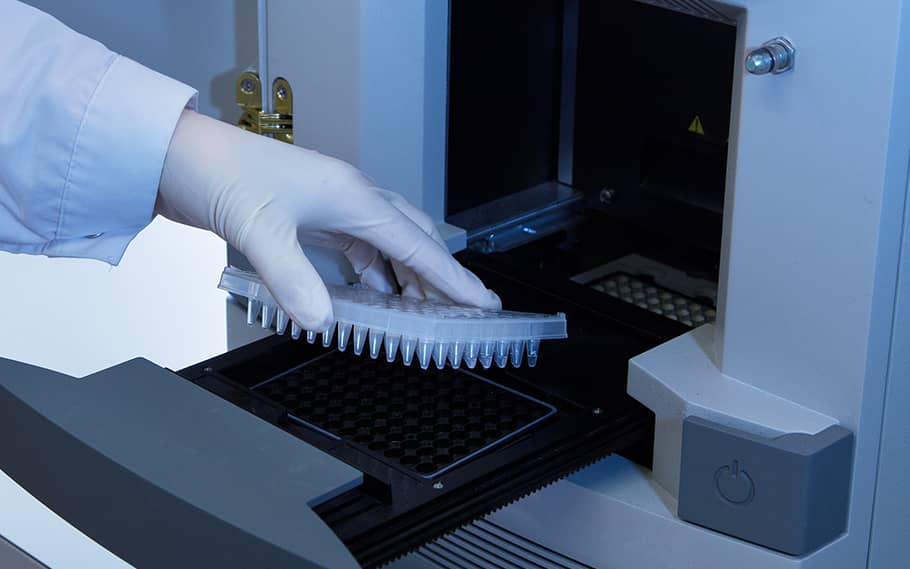Qualitative, unspecific screening
Defined marker sequences are often used in genetic engineering to insert a foreign genome into the genome of the target plant. Detection of these sections can also indicate the presence of a genetic modification, without being able to make a specific statement about exactly what kind of alteration it is.
Specific detection
To determine the exact varieties, an “event-specific” analysis must be performed, i.e. searches must be made for the integrated and specific genotype.
Quantitative detection
When comparing the results obtained with the certified Standards (GMO-content of a known concentration), a quantitative result can be defined. As a result, it can be determined whether the present goods have to be rejected or if they can be considered marketable (in relation to GMOs).
Why are GMOs often also detected in GMO-free products?
GMO analysis is a highly-sensitive analysis technique. Even traces of GMOs can be reliably detected.
Because of the often long transportation routes and the “moving” that goes along with it - primarily in the contaminated cargo holds of ocean-going ships and inland waterway barges, but also in railway carriages and lorries - it can often result in positive findings. This is why GMO soya is continually being found in oats or maize.
The increasing cultivation of GMOs is another reason for the increasing danger of “GMO-free” fields nearby being contaminated.
In order to make meaningful and significant statements regarding a batch, particular attention should be paid to taking a representative pattern of samples when sampling.
Our services in detail:
- Consultation on GMO analyses
- Determination of the GMO content (soya, maize, rapeseed)
- Specific GMO detection
(e.g. soya: roundup ready, RR-soja 2- Yield; 8 varieties of maize; rapeseed: GT 73) - Additional services are according to the directory of services or upon request.

![[Translate to english:] GVO-Analytik [Translate to english:] GVO-Analytik](/fileadmin/Content/05_Lebensmittel/Lebensmittel_GVO-Analytik/lebensmittel-gvo-analytik-header.jpg)



